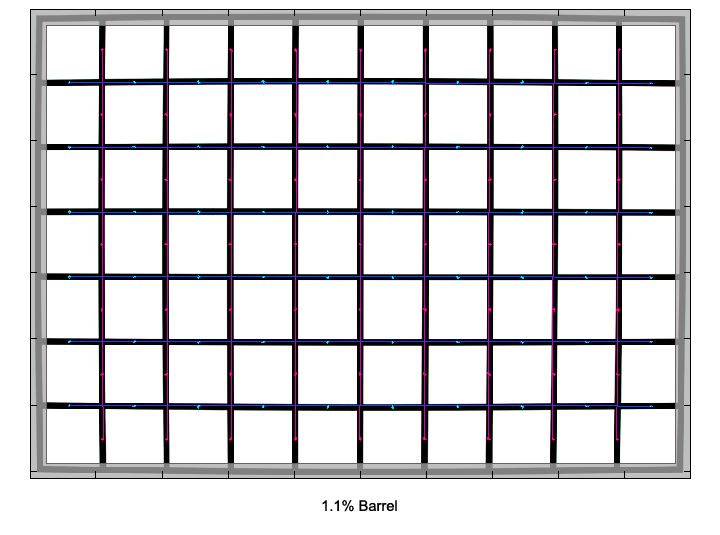|
Page 2 of 3

Distortion
The level of distortion is reasonably well controlled for a fast tele zoom lens. At 50mm there is some barrel distortion (~1.1%). Typical for such lenses, the type of distortion switches to the pincushion type at longer focal lengths. However, at medium zoom settings, the amount of distortion is unnoticeable and still rather moderate at the longest focal length, reaching just 0.3% here.
|
Move the mouse cursor over the focal length text marks below to observe the respective distortion
|
| 50mm |
100mm |
150mm |
|

|
The chart above has a real-world size of about 120x80cm.
Vignetting
The sheer size of the lens may lead to hopes that vignetting is very low. Surprisingly though the amount of light fall-off at the largest aperture is a bit on the high side, especially at the long end of the zoom range. As usual, stopping down reduces the amount of vignetting considerably.

MTF (resolution)
The lens delivered very high resolution figures in the lab. The image center is excellent straight from the largest aperture setting throughout most of the zoom range. Only at the longest focal length the resolution drops to very good values wide open, but stopping down lifts it back to excellent figures.
The borders and corners deliver very good resolution throughout the whole tested aperture and focal length range, even reaching excellent figures at 100mm when stopped down a little.
Please note that the MTF results are not directly comparable across the different systems!
Below is a simplified summary of the formal findings. The chart shows line widths per picture height (LW/PH) which can be taken as a measure for sharpness.
If you want to know more about the MTF50 figures you may check out the corresponding Imatest Explanations

Chromatic Aberrations (CAs)
Chromatic aberrations (color shadows at harsh contrast transitions) are well controlled. At both ends of the zoom range CAs are about 0.8 pixels at the image borders at all tested apertures. At medium focal lengths they are even lower, reaching just above 0.3 pixels wide open and even lower values when stopped down.
Please note that lateral CAs can easily be corrected in software or by the camera itself (most modern Nikon DSLRs remove CAs on-the-fly if you shoot JPGs).

Bokeh
Being a fast tele lens, one of the lens' welcome abilities is to separate the main subject from the background, so the rendering of out of focus areas is an important aspect.
The EX 50-150 OS delivers pleasing background blur, even in the often critical transition zone.
Thanks to 9 rounded aperture blades, background highlights remain circular throughout the whole aperture and focal range. At large apertures, they show a smooth filling with almost no outlining. Unfortunately stopping down emphasizes outlines around highlights from f/5.6 onwards.
Thanks to the size of the lens, background highlights are not cut off towards the image borders due to mechanical vignetting. There is also only a very minor amount of green bokeh fringing around highlights (see also next section).

Bokeh Fringing
Bokeh fringing is a common issue with relatively fast glass. It's visible as halos of different colors in out-of-focus areas - magenta (red + blue) in front of the focus point
and green beyond.
The EX 50-150/2.8 DC OS is an APO lens. Consequently, there is only a very slight amount of bokeh fringing, mainly in the background (green fringing). Stopped down to f/5.6 and beyond, there is no fringing left in the image.
|